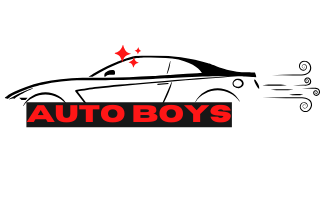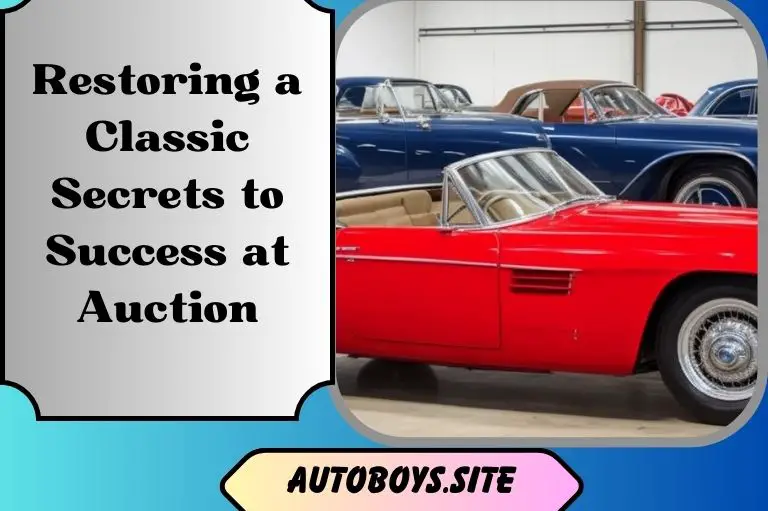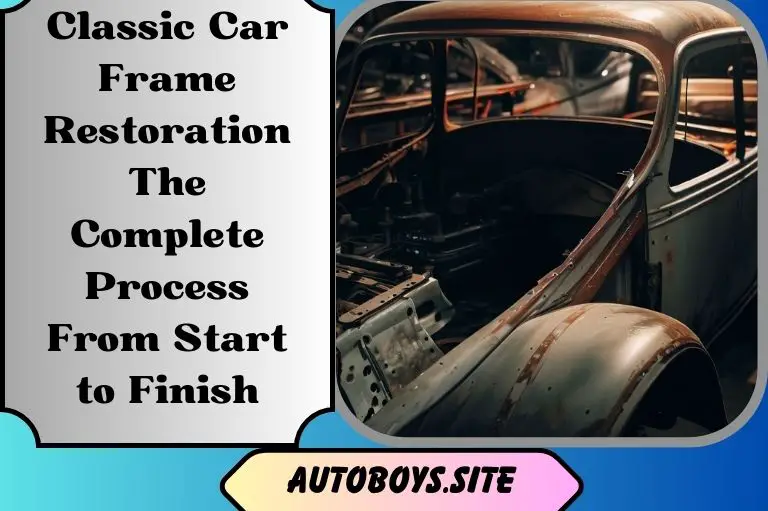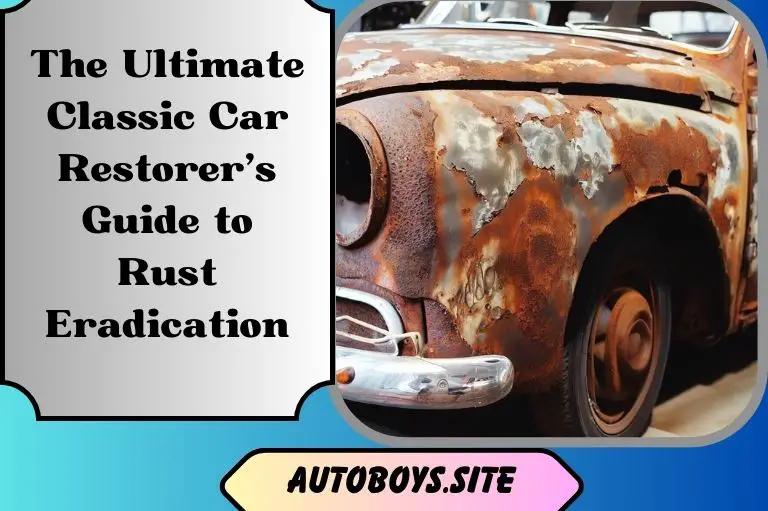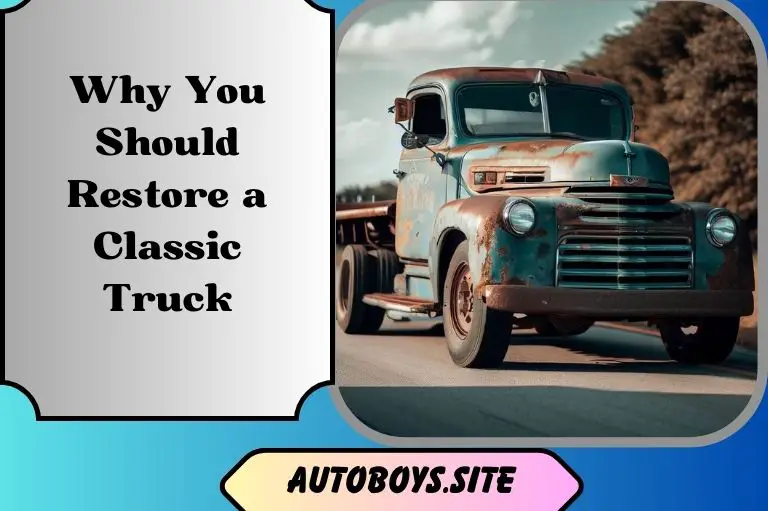Restoring a Classic: Secrets to Success at Auction
Are you thinking of restoring a classic car? Perhaps you’ve always dreamed of bringing an old beauty back to life and showing it off at local car shows. Restoring a classic car can be extremely rewarding, but it does require time, money, patience, and knowledge. As someone who has restored multiple classic cars over the years, I want to share some secrets to success that I’ve learned along the way. From finding the right project car to tracking down hard-to-find parts, restoring a classic presents many challenges. But with the right approach and mindset, you’ll be driving your dream car in no time. If you’re ready to roll up your sleeves and dive into a classic car restoration, read on.
This guide will provide you with the tips you need to restore your classic car and have it turn heads in no time.
Choosing the Right Auction House for Your Classic Car Restoration
Choosing an auction house that specializes in classic cars is key to a successful restoration and sale. The top three auction houses renowned for high-quality classic car offerings are:
RM Sotheby’s
RM Sotheby’s is the premier classic car auction house, hosting prestigious sales at locations worldwide. They feature rare, highly desirable classic cars of the highest caliber. Consigning with them provides unparalleled global exposure and typically realizes the best prices.
Classic Car Auctions
A world-class, specialist auction house offering iconic classic cars. They have a reputation for attracting serious buyers and achieving strong sales results. Classic Car Auctions offers competitive commission rates and guides to help you realize the maximum value for your classic car.
Bonhams
Bonhams offers live and online classic car auctions, providing opportunities for buying and selling restored classic cars. They have a dedicated classic car department and host renowned annual sales. Bonhams has a vast, global reach, but commission rates tend to be higher. For the best price, consign with them for a prestigious, well-promoted sale.
Once you’ve selected an auction house, schedule an appraisal to determine an estimate of your classic car’s value in today’s market. Provide details on its provenance, condition, and restoration to get an accurate valuation. Check recent sales of comparable models to determine a competitive reserve price. Then get your classic car auction-ready by addressing any needed reconditioning to maximize your selling price. With the right preparation and choice of auction house, you’ll be on the road to a successful classic car auction.
Inspecting a Classic Car Before Bidding – What to Look For
Inspecting the Exterior
When checking out a classic car at auction, the first thing you’ll want to do is inspect the exterior. Look for scratches, dents, discoloration, rust, and blemishes on the body panels, trim, bumpers, and chrome. Check for gaps between panels, which may indicate frame damage or accident repair.
Assess the condition of the undercarriage, including the frame, subframes, differential, control arms, leaf springs, and shock absorbers. Signs of rust, corrosion, or damage here could mean expensive repairs down the road. Look for any signs the vehicle has been repainted or had bodywork done. Mismatched paint shades or overspray on trim parts are red flags.
Checking Under the Hood
Pop the hood and check that the engine and components like the carburetor, alternator, and radiator appear clean and well-maintained. Look for any signs of oil, coolant, or other fluid leaks. Check that hoses and drive belts are in good shape, not cracked or fraying. Ensure the vehicle identification number on the firewall matches the VIN listed for that vehicle.
Start the engine and listen for any knocking, squealing, or grinding noises that could indicate worn piston rings, bearings, or other internal engine damage. Check that all accessories like power windows and locks, headlights, turn signals, wipers, and heater are functioning properly. Test drive the vehicle if possible to determine how it handles and shifts, and whether the temperature gauge shows the engine is overheating.
With a careful inspection of both the exterior and mechanical parts, you’ll know if the classic car you’re interested in is road-ready or needs major work. Use your findings to determine the maximum bid price you’re willing to pay to get a good deal at the auction.
Understanding Auction Fees When Buying a Classic Car
When buying a classic car at auction, it’s important to understand the fees involved. Auction houses charge sellers fees for listing and selling their vehicles, but as a buyer, the fees you’ll pay depend on the auction house.
BaT Auctions
At BaT Auctions, sellers pay a flat fee of $99 to list their car, whether or not it sells. As a buyer, you don’t pay any additional fees on top of your winning bid. What you bid is what you pay. This straightforward fee structure is appealing to many buyers and sellers.
Other Auctions
Some auction houses charge a “buyer’s premium” where buyers have to pay a percentage of the final bid price, typically 5-10%. So if you bid $20,000 on a car and the buyer’s premium is 10%, you’ll pay $22,000 total for that vehicle. These additional fees are important to factor in when determining your maximum bid.
Inspection Fees
Most auctions allow you to inspect the vehicles before bidding. Some charge a small inspection fee, around $20-$50, to view and inspect a particular car. The fee typically goes toward the cost of having the vehicle on-site for viewing. It’s worth paying the inspection fee to fully check out a car in person before bidding to avoid surprises.
- Research different auctions to compare their fee structures before bidding. Understand all costs involved so you can determine the maximum price you’re willing to bid for a vehicle.
- Inspecting a vehicle in person is the best way to determine its condition and value. Pay any required inspection fees to thoroughly evaluate a car before bidding.
- At “no-reserve” auctions, vehicles will sell to the highest bidder, regardless of the price. Be very cautious bidding on no-reserve vehicles, as they could potentially sell for much less than market value.
Doing your homework on fees and inspecting vehicles in person will help you get the best deal on a classic car at auction. With the right approach, you can drive away with an incredible vehicle at a price that fits your budget.
Setting a Realistic Price for Your Classic Car at Auction
When determining a realistic price for your classic car at auction, do your homework. Check recent sales of comparable vehicles to establish a fair market value range. See what similar cars in similar condition have been selling for at major auctions like RM Sotheby’s, Barrett-Jackson, or Mecum.
Set a budget and stick to it
Know how much you can afford to spend before the auction and don’t get caught up in the excitement of bidding. Set a maximum price you’re willing to bid for your dream car and don’t go above it. It’s easy to get carried away in the thrill of the auction, but buying a car that’s over your budget will lead to remorse and possibly even financial hardship.
Check the vehicle history
Review the ownership and service records to verify the car’s provenance and ensure there are no undisclosed problems with the engine, transmission, or frame. Check sites like VehicleHistory.com or Autocheck to look for any past accidents or other title issues that could affect the value.
Inspect the car thoroughly
Examine the car in person before the auction whenever possible. Look for any signs of rust, accident damage, or shoddy repair work. Check that features and components like the engine, brakes, heating/cooling system, lights, electronics, and interior are all in good working order. Get a trusted mechanic to do a pre-purchase inspection. Minor issues can often be fixed, but major problems are best avoided.
Time your bid strategically
Bid at the optimal time to get the best price. Early bidding may start low but often ends high as bidders get caught up in the excitement. Bidding at the end can get the best deal but the car you want may sell before you bid. Watch the flow of the auction and determine the best time to place your bid. Start with an initial bid below your maximum price, then raise your bid in increments to allow for counterbids until you win the auction or reach your limit.
With research, realistic expectations, and strategic bidding, you’ll get the best price for your classic car at auction. But also remember, the most satisfying sales go to buyers with a passion for the vehicles, not just the investment. If it’s your dream car, that passion can be priceless.
Marketing Your Classic Car to Get Top Dollar at Auction
To get top dollar for your classic car at auction, you need to market it effectively. Here are some proven tips to promote your vehicle and generate interest among serious buyers:
Build a website to showcase your classic car
Create a simple website highlighting your vehicle’s details, history, and restoration process. Include high-quality photos that capture the car at its best angles. Offer a free vehicle guide or checklist in exchange for visitors’ email addresses to build your mailing list.
Run a social media campaign
Launch a social media campaign across platforms like Facebook, Instagram, and Twitter to spread the word about your upcoming auction. Post photos and share details about your classic car to generate curiosity. Invest in targeted Facebook ads to reach potential buyers interested in collector vehicles. Engage with commenters and build buzz.
Email past customers and collectors
If you’ve sold classic cars before or have a network of fellow collectors, email them about your auction. Let them know all the details about your vehicle, the auction house, dates, etc. They may be interested in bidding or may know someone else who is. Personalized emails to people already familiar with and passionate about classic cars can be very effective.
Place ads in enthusiast publications
Advertise your classic car in publications that cater to collectors and restoration enthusiasts. Magazines like Hemmings Motor News, Sports Car Market, and Classic Motorsports reach your target audience. Place ads at least 2-3 months ahead of the auction to give buyers time to view the vehicle and make arrangements to attend or bid remotely.
Offer a free vehicle inspection
Allow interested buyers to view and inspect your classic car ahead of the auction, either in person or via a live video chat. This builds confidence in the vehicle’s quality and condition. Be transparent about any restoration work done or parts replaced. A hands-on experience with a well-maintained classic car will motivate bidders and increase their maximum price.
With the right marketing and promotion, you can attract enthusiastic buyers to bid up the price of your classic car at auction. The key is targeting your efforts at audiences that will truly appreciate such a rare and special vehicle.
Conclusion
As you can see, there’s a lot to keep in mind when buying or selling a classic car at auction. Do your homework, set a budget, inspect the vehicle thoroughly, and know exactly what you’re getting into before you place a bid or list your vehicle. While auctions can be risky, if you go in prepared you’ll have a much better chance of success. Who knows, you may just find or sell your dream car and drive off into the sunset, memories of the open road ahead and a piece of automotive history behind you. The adventure of a lifetime awaits at the classic car auction.
